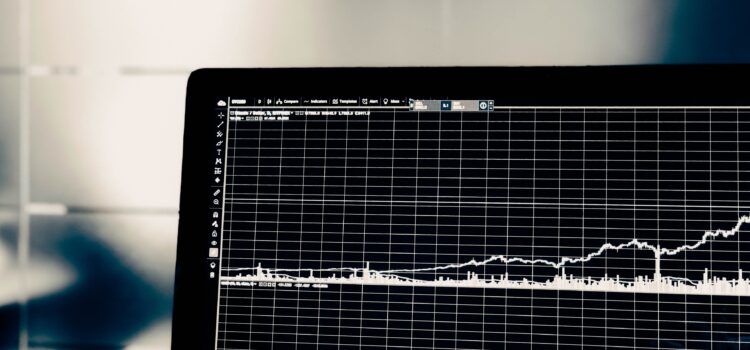

This article is an excerpt from the Shortform book guide to "Flash Boys" by Michael Lewis. Shortform has the world's best summaries and analyses of books you should be reading.
Like this article? Sign up for a free trial here .
What is arbitrage? What are some arbitrage examples that are most often used in high-frequency trading (HFT)?
According to Michael Lewis, the author of Flash Boys, there are three different forms of arbitrage that firms use if they participate in HFT: slow-market, dark pool, and rebate. These arbitrage examples help investigators understand how HFT works in large corporations.
Continue reading for a better understanding of arbitrage with examples to illustrate the concept.
What Is Arbitrage?
Lewis explains that most HF firms make their money from different forms of arbitrage, which is when traders buy and sell a stock at two different prices at two different exchanges. Traders who can effectively time their purchases and sales profit from the temporary differences in stock prices.
Lewis notes that stock values are constantly changing—prices shift multiple times in a second. Every time a stock is bought or sold, its value changes slightly. Usually, its value doesn’t change very much—by fractions of a cent—but this small difference in price is enough for HF traders to take advantage of arbitrage.
Imagine you buy an old typewriter at a local antique store for $35. You then go to a different antique store, where they offer you $40 for your typewriter. You accept and pocket the $5. This is similar to how HF traders make money from arbitrage, but HF traders complete this process in milliseconds. For example, at NYSE, an HF trader buys 100 shares of stock priced at $200 and sells these stocks at Nasdaq for $200.10, thus profiting off the difference in price.
| Arbitrage and Market Efficiency Lewis argues that the way that HF traders use arbitrage is bad for investors, but other experts point out that arbitrage itself is not inherently bad. In fact, it’s encouraged in the US. Experts believe that arbitrage contributes to market efficiency since it rebalances price discrepancies in stocks and minimizes the spread in stock prices. This price rebalancing is known as the Law of One Price, which is an economic concept that states that the price of a stock will be the same in a market free of transaction costs, legal restrictions, and currency exchange rates. The only way to achieve the Law of One Price is through arbitrage. By buying a stock at a low price and selling it at a higher price, market prices equalize. The problem seems to stem from when certain parties can take advantage of arbitrage because of technological superiority, while other parties can’t. |
Arbitrage Example 1: Slow-Market Arbitrage (Also Called Latency Arbitrage)
Lewis explains that the most widespread tactic HFT uses is slow-market arbitrage, or latency arbitrage. This is when HF traders use different latency speeds to capitalize on changes in stock prices. HF traders see changes in stock prices on one exchange and buy or sell those orders on other exchanges that haven’t caught up to the changes in stock prices. Slow-market arbitrage is why trading firms care so much about their latency speeds and why it matters to be a microsecond faster than their competitors.
(Shortform note: While Lewis discusses slow-market arbitrage within the US. stock markets, it can also be used in foreign markets. Stock prices on foreign exchanges are sometimes slower to adjust to exchange rates. Traders will purchase these stocks on foreign exchanges for lower prices (before it’s had time to update) and sell them at a higher price in the US market. According to a 2020 study, slow-market arbitrage costs regular investors about $5 billion each year.)
Additionally, Lewis explains that the SIP (the program that determines the best market price for a stock) has high latency, so it’s slower to obtain and then transmit market data. HFT firms developed their own faster versions of the SIP—which gathers and condenses stock prices from all the exchanges—giving them a slight sneak peek of what the market will do. Then the HF traders use this advanced information to capitalize on the price difference.
Because HF traders have access to faster infrastructure than investors, they can see changes in the markets before anyone else. They can then use that advanced knowledge to game the market—buying a stock at one price on one exchange and then reselling it for a higher price on another exchange where the price hasn’t updated to the lower price yet.
It’s the same idea as if you went into a popular clothing store chain and bought a shirt on sale. You leave that store with your new shirt and go to the same store in a different location. The second location hasn’t marked down its sale items yet, so you return the shirt for full price, pocketing the difference.
Arbitrage Example 2: Dark-Pool Arbitrage
Lewis names another HFT tactic: dark-pool arbitrage, which is similar to slow-market arbitrage. Dark-pool arbitrage is when HF traders make money buying and selling stocks using the price differences between dark pools and other exchanges. Dark-pool arbitrage generates more than a billion dollars a year.
Banks aren’t required to immediately publish what goes on in their dark pool, or private stock exchange, thus allowing investors to trade more discreetly. But because they don’t immediately publish this information, there is a time lag between dark pools and public stock exchanges. Lewis explains that this time lag means dark pools are slow to reprice stocks when their values change on public stock exchanges, thus allowing HF traders to commit dark-pool arbitrage.
There’s an easy way to look at this arbitrage example. Say Jordan has an order to buy Tesla stock waiting in a dark pool. Then Tesla stocks decrease in value on the public markets from $300.00 to $299.99. A dark pool is slow to reprice Tesla’s stock from $300 to $299.99 on their exchange. An HF trader buys Tesla stocks on the public exchanges for $299.99 and sells them to Jordan at $300 before the dark pool reprices the stock to $299.99. Thus, Jordan loses money to the HF trader.
Arbitrage Example 3: Rebate Arbitrage
HF traders found ways to exploit different exchange rules, including the changes in the rebate system. Different exchanges have different rebate rules—sometimes an exchange rewards takers with a rebate and charges makers a fee, while other exchanges do the opposite. To make money off of these new rebate rules, HF traders use another arbitrage example called rebate arbitrage, which is when HF traders capitalize on differences in rebate rates at different exchanges. HF traders profit from the rebates, not from the stock itself. This tactic doesn’t add or take away stock from the overall market supply—instead, the stock just moves from exchange to exchange.
In rebate arbitrage, HF traders buy a stock for which they receive a rebate. Then they immediately sell the stock for the same price on an exchange where they’ll also receive a rebate for selling that stock or on an exchange where the fee to trade is less than the rebate they’ve already received. Thus the money from buying and selling the stock cancels out, but the HF trader pockets the rebates. Lewis explains that the rebates are cents or fractions of a cent per stock, but HF traders buy and sell large quantities of stocks in a short amount of time, meaning these tiny rebates add up and result in large profits.
For example, BATS might offer a $0.03 rebate for each share bought, and NYSE might offer a $0.05 rebate for each share sold. An HF trader could buy a $50 stock from BATS and receive the $0.03 rebate. Then it could immediately sell that $50 stock at NYSE and receive the $0.05 rebate. The HF trader made $0.08 for moving the stock around, but it didn’t actually help the market. If the HF trader bought and sold 100,000 shares of this stock, they’d make $8,000 from the rebates.

———End of Preview———
Like what you just read? Read the rest of the world's best book summary and analysis of Michael Lewis's "Flash Boys" at Shortform .
Here's what you'll find in our full Flash Boys summary :
- Why high-frequency trading (HFT) is a threat to your investments
- A look at Wall Street’s greedy response to HFT
- How Canadian trader Brad Katsuyama tried to fight the problem






